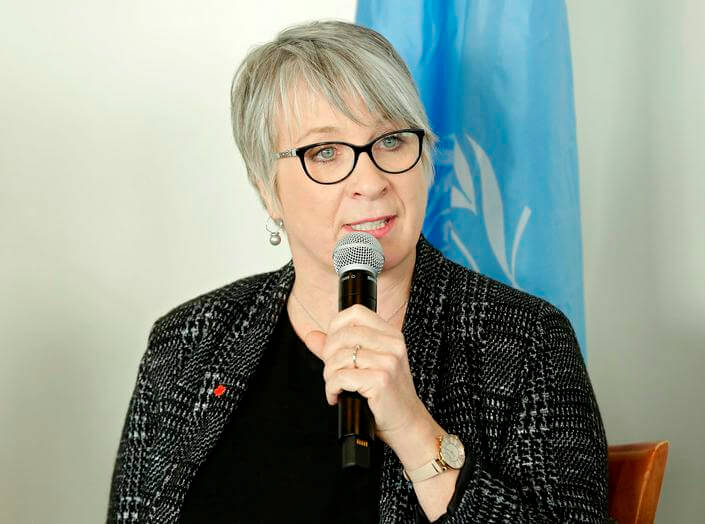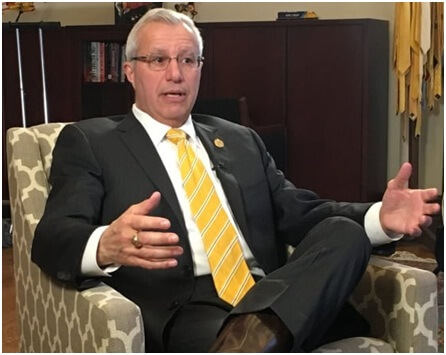Government of Canada provides assistance to Nova Scotia in response to extreme flooding
Extreme flooding in Nova Scotia has resulted in evacuations, damaged properties and critical infrastructure, and most tragically, loss of life.
The Voice of Canada News:
The Honourable Bill Blair, President of the King’s Privy Council for Canada and Minister of Emergency Preparedness, approved a Request for Federal Assistance from the Province of Nova Scotia to assist with their response to this emergency.
Two Canadian Armed Forces CH-149 Cormorant search and rescue helicopters from 14 Wing Greenwood assisted RCMP-led search and rescue operations. The Canadian Coast Guard (CCG) and Royal Canadian Mounted Police (RCMP) were also deployed and continue to assist in these efforts.
In addition to the search and rescue deployment, the federal government has made the following supports available:
- The Canadian Coast Guard has provided personnel and equipment, including helicopters, to the community of Hants. Small vessels are at the ready to provide support to remote coastal communities should access to those communities become restricted.
- Transport Canada is providing National Aerial Surveillance Program (NASP) aircraft to support assessing damage to roads, bridges, critical infrastructure, impacts to the watershed, and to have information available near real-time.
- Indigenous Services Canada (ISC) provides funding to First Nation communities for preparedness, mitigation, response and recovery through the Emergency Management Assistance Program to enhance First Nations’ capacity to address emergency events including flooding. ISC is working closely with First Nation communities, the Confederacy of Mainland Mi’kmaq and the Government of Nova Scotia to ensure First Nations are fully supported to respond to this emergency event.
- Environment and Climate Change Canada (ECCC) is providing continued weather forecasting capabilities to the Nova Scotia Emergency Management Office (NS EMO). As well, ECCC is actively monitoring water level and flow conditions throughout Nova Scotia to support local emergency response and repairing damaged river monitoring equipment to maintain operations, as part of its ongoing cost-shared hydrometric program with the province.
- RCMP are supporting with local forces in addition to assisting in SAR operations.
Public Services and Procurement Canada, Employment and Social Development Canada, Public Health Agency of Canada, and Innovation, Science and Economic Development Canada are standing by for assistance with the delivery of any additional resources needed.
Quotes
“As the impacts of the devasting flooding continue to be felt across the province, I want to assure Nova Scotians that all orders of government are working together to ensure the safety of those affected. Thank you to all the first responders and local volunteers who continue to work tirelessly to support communities.”-The Honourable Bill Blair, President of the King’s Privy Council for Canada and Minister of Emergency Preparedness
“The province of Nova Scotia is in our thoughts after the impacts of the tropical rainfall over the past couple of days. The Canadian Coast Guard is on site with our assets and services, and are ready to support the communities and people in need. We are grateful to all those who are working extremely hard to help recovery and cleanup efforts.”– The Honourable Joyce Murray, Minister of Fisheries, Oceans and the Canadian Coast Guard
“My thoughts are with all Nova Scotians affected by this situation. Heavy rain and flooding caused considerable damage to roads and infrastructure in Nova Scotia. To limit interruptions to the supply chain, my departmental officials are working with CN as they restore damaged rail lines and will continue to provide special assistance such as that from the National Aerial Surveillance Program to assess the damage.”-The Honourable Omar Alghabra, Minister of Transport
“First Nations across the country are disproportionately affected by extreme weather including wildfires and now flooding in Nova Scotia. Our thoughts go out to all those impacted by the current situation. The Government of Canada will always be there to support First Nations with what they need to deal with the immediate emergency. When the time comes, we will also be there to support recovery efforts. I want to thank Chiefs, the Confederacy of Mainland Mi’kmaq and First Nations emergency first responders who are working incredibly hard to make sure everyone is safe.”-The Honourable Patty Hajdu, Minister of Indigenous Services
“Canadians are regularly feeling the impacts of climate change as they experience severe weather events, such as floods. We will continue to provide local authorities with weather forecasts and information on water levels and flows, which are critical to flood mitigation measures and emergency response. Our teams have responded to this historic situation, gathering and delivering essential water level and flow information needed for local response. Our thoughts are with all Canadians affected by flooding, as well as with the first responders, volunteers and emergency managers working hard to keep people safe.”-The Honourable Steven Guilbeault, Minister of Environment and Climate Change
“The Government of Canada is committed to helping those who have been impacted by the floods of the past weekend. Our thoughts are with all those who have been affected. As Canadians, we must always pull together, just as Nova Scotians have done for one another.”-The Honourable Marco Mendicino, Minister of Public Safety
Quick facts
- On July 21, 2023, a system passed over Nova Scotia bringing significant rainfall and lightning, mostly in the Halifax area, which received up to 250 mm of rain in certain areas over a very short timeframe, resulting in a significant and fast accumulation of water, and flash flooding. A province-wide state of emergency (SOE) was declared on July 22 by the province due to the severe flooding event and is expected to remain in effect until August 5 unless the provincial government ends or extends it.
- The flooding event impacting Nova Scotia has seen over 250 millimeters of rain fall in a very short period, resulting in significant flooding, stranded motorists and homeowners, and widespread damage to transportation corridors.
- The Government Operations Centre is responsible for coordinating the Government of Canada’s response to emergency events.
- In Canada, emergencies are managed first at the municipal level and if they need assistance, they request it from their province or territory. If the emergency escalates further, provinces or territories can get help from the federal government.
- A Request for Federal Assistance is initiated when an emergency event overwhelms or threatens to overwhelm the resources of a province or territory and federal government help is needed to effectively support the impacted region.
- Should a province or territory make an official Request for Federal Assistance, there is a well-established process in place for managing the request, through the Government Operations Centre, and includes provincial/territorial and interdepartmental consultation and coordination.
- If provincial and territorial authorities require assistance, they may ask the Canadian Armed Forces (CAF) for help. When the CAF responds to natural disasters in Canada, it is known as Operation LENTUS.
- CAF assistance complements and enhances provincial and local resources with unique capabilities, including military personnel and equipment. The primary objective is to help provincial and local authorities stabilize the situation and to reassure Canadian residents in the affected areas.
- The number of CAF members deployed across the region will vary based on tasks that are identified by the provinces.
- The Government Operations Centre works closely with Public Safety Canada’s regional offices in an emergency. These regional offices, which are located in all provinces and in the North, provide regional input and perspective while supporting the coordination of the federal response to an emergency event. Their networks of provincial and territorial officials, other federal departments and agencies, and diverse communities and stakeholders, are essential to this work.











